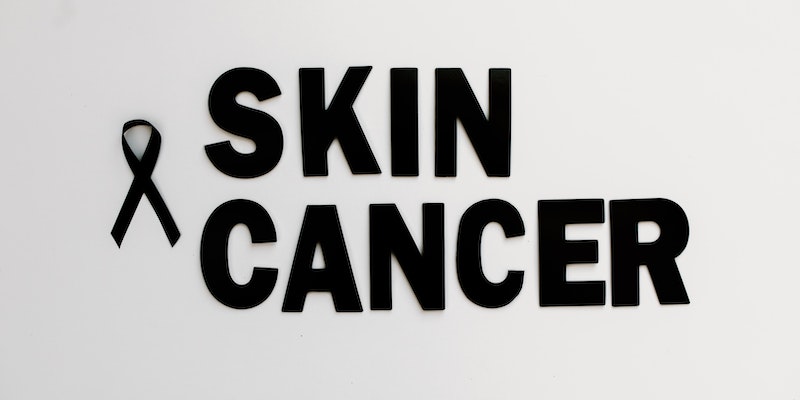Causes of White Spots on Nails and What They Indicate
Oct 02, 2023
Imagine looking down at your hands and noticing an uninvited guest – a white spot on your nail. Many of us have experienced this scenario, and while the appearance of white spots on your nails can be alarming, understanding their origins and implications can alleviate concerns. Learn about white nail spots, their causes, prevention, and treatment.
Defining White Spots on Nails
White spots on your nails, scientifically known as leukonychia, manifest as minor, white discolorations on the nail plate. These spots can vary in size and shape, and while they predominantly appear on fingernails, toenails are not exempt. Notably, white spots on nails are symptomatic, implying underlying causes ranging from minor to more serious health considerations.
Root Causes of White Spots on Nails

Trauma or Injury
Among the various white spots on nails causes, trauma or injury to the nail matrix sits prominently. The nail matrix, a delicate and crucial part of nail anatomy, is where the growth of the nail initiates. When subjected to repetitive or substantial trauma, it can react, forming white spots on the growing nail.
The sources of such trauma are often mundane and habitual actions—biting your nails, tapping them incessantly on hard surfaces, or even the seemingly innocuous act of shutting a drawer. These activities might seem inconsequential, but their cumulative effect can be significant, illustrating how daily habits can harm nail health. The resultant white spots develop as the nail grows out, serving as a visible reminder of the impact of these seemingly trivial actions.
Allergic Reaction
The beauty industry abounds with products that enhance nail aesthetics, from polishes to hardeners to adhesives. However, another common cause of a white spot on nail is an allergic reaction to these products. The ingredients, often chemical compounds, can trigger allergic reactions, forming white spots.
It emphasizes the significance of being conscious and discerning about the products we apply to our nails. Understanding the composition of these products, being aware of any known allergies, and conducting patch tests can mitigate the risk of adverse reactions. In an era where the allure of aesthetic appeal is pervasive, balancing beauty with health becomes pivotal, highlighting the importance of informed choices in nail care products.
Zinc Deficiency
Delving into nutrition reveals another protagonist in the narrative of white spots on nails—Zinc. This mineral is vital to tissue growth and repair, making it crucial to health. White nail patches are one sign of zinc insufficiency.
The link between zinc deficiency and white spots emphasizes the necessity of a nutritious diet. Consuming zinc-rich foods, including meat, dairy, nuts, and legumes, can help maintain zinc levels. Supplements can be a viable alternative when dietary intake is insufficient, subject to medical advice. Nutrition, thus, emerges as a cornerstone in maintaining nail health and preventing the appearance of white spots.
Fungal Infections
Turning our attention to the microbial world, fungal infections are a notable cause of nail white spots. Fungi thrive in moist, warm environments, and the human body, with its myriad of niches, offers an ideal habitat. Nails, both finger and toenails, are not exempt from their influence.
When a fungal infection takes hold, it can lead to a spectrum of changes in nail color, texture, and strength. The appearance of white spots is a common manifestation, signaling the presence of these microorganisms. Addressing fungal infections necessitates medical intervention, often involving antifungal medications, highlighting the importance of timely diagnosis and treatment.
Eczema and Psoriasis
Skin conditions, notably eczema and psoriasis, also play a role in the story of white spots on nails. These conditions, characterized by inflammation, can extend their influence beyond the skin, affecting the nails. The inflammatory response that describes these conditions can impact nail health, manifesting white spots.
Managing eczema and psoriasis involves addressing the underlying inflammation, often through medications and lifestyle modifications. Ensuring effective management of these conditions can mitigate their impact on the nails, underscoring the interconnectedness of skin and nail health.
Genetics
Peering into the genetic blueprint of individuals reveals another dimension of white spots on nails. Genetics can play a role, with some individuals genetically predisposed to developing these spots. This hereditary influence emphasizes the diverse factors contributing to nail health and the appearance of white spots.
While genetics is not a modifiable factor, knowing a familial predisposition can inform nail care practices. It underscores the importance of personalized approaches to nail health, taking into account individual genetic backgrounds.
Underlying Health Issues
While often benign and transient, persistent white spots on nails can be harbingers of more severe health issues. These could range from zinc deficiency and skin conditions to more systemic concerns. In such instances, the appearance of white spots on nails is not just a cosmetic concern but a symptom warranting further investigation.
Consulting a healthcare professional becomes advisable if white spots persist, multiply, or are accompanied by other changes in nail health. A thorough assessment can help rule out underlying health issues, ensuring that any necessary interventions are timely and appropriate. The presence of white spots on nails, thus, becomes a signal to tune into, a potential indicator of the body's broader health narrative.
Diagnosis and Treatment
Diagnosing the exact cause behind the white spots on your nails is the cornerstone of effective treatment. A healthcare professional may conduct a thorough examination, possibly including a nail biopsy or other tests, to ascertain the underlying cause. Depending on the diagnosis, treatments can range from topical medications for fungal infections, nutrient supplementation for deficiencies, or lifestyle modifications to mitigate nail trauma.
Preventive Measures

Nail Care
Regular and diligent nail care is instrumental in preventing white spots on your nails. This includes keeping the nails clean and trimmed, avoiding biting or picking, and being cautious during manicures to prevent injury to the nail matrix.
Balanced Diet
Maintaining a balanced diet rich in essential vitamins and minerals, particularly zinc, can bolster nail health and prevent the appearance of white spots due to nutritional deficiencies.
Quality Nail Products
Being selective about nail products and opting for non-toxic, hypoallergenic options can minimize the risk of allergic reactions leading to white spots on the nails.
Avoiding Moist Environments
Since fungi thrive in moist environments, keeping the nails dry and practicing good hygiene can significantly reduce the risk of fungal infections and consequent white spots on nails.
When to Seek Professional Advice
While white spots on nails are typically benign and self-resolving, observing multiple areas, changes in texture, or experiencing pain necessitates professional medical advice. A healthcare professional can conduct a comprehensive assessment, rule out underlying health issues, and recommend appropriate treatments.





